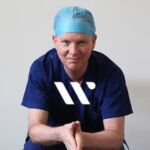
Let’s face it. There have been some serious concerns around using fat grafting for breast enlargement. Can it cause or increase the risk of breast cancer? And can it obscure a breast cancer on a mammogram, thereby delaying the diagnosis of breast cancer?
I have a lot of experience in this area and my learnings may surprise you. Firstly, there is enough decent medical scientific literature now published to be confident that fat grafting to the breast is safe. It does not increase the risk of breast cancer and mammograms can still be read. So that’s all good.
But the real issue is that it doesn’t seem to work that well. Fat grafting is not often the ideal solution for breast enlargement. I’ve thought a lot about this and I think I know why. There are three types of issues that possibly affect the result.
- Science – how much of the fat “takes” permanently through fat cells surviving the transfer.
- Practicality – is there enough fat to harvest?
- Shape – will the fat graft be able to create a breast with an excellent shape?
Fat grafting can definitely increase the volume of the breast permanently, there’s no doubt about that. The caveat is, it only inflates the existing breast shape and doesn’t give much upper pole fullness. Not only that, but it doesn’t add much forward projection, which many patients ask for. It’s just not dense enough to achieve this.
The patients I have helped in this way are generally happy with the fact that their breasts are bigger. But most are disappointed that the technique hasn’t given them quite the shape they are seeking – they want more upper pole fullness and projection than fat alone can achieve. Most of these patients go on to have a small implant to complete their desired shape. So, my experience is that fat grafting ‘works’ to enlarge the breast, but it doesn’t usually achieve the best possible shape.
The other issue with fat grafting for breast augmentation is the amount of donor fat that’s required.
Let’s say the patient needs a 300ml implant volume – a pretty typical size for breast implants. A total of 600ml of permanent fat graft is needed to achieve this – 300ml per side. Let’s say that 30% of the fat graft takes and stays permanently. So, I need to graft up to 900ml per side to be sure of getting that. That’s 1.8 litres of graftable fat. About two thirds of what is harvested is typically usable, so I need to harvest nearly three litres of fat from other parts of the body. The vast majority of breast augmentation candidates do not have a spare three litres of fat to be harvested as fat graft – these are thin people! There are some candidates who are suitable, who tend to have a pear or apple shape, but they’re not all that common.
It is true that our harvest techniques are getting much better, so to produce 600ml in total of graftable fat may not need more than a litre of raw fat aspirate. The problem is that many people just don’t have that much available.
So, where is fat grafting effective and useful in plastic surgery practice today?
Well, it helps disguise implants by making the tissues over the implant thicker, and it’s good for correcting contour defects and asymmetries. It is very useful in breast cancer reconstruction, breast asymmetry, correction of little breast deformities, as a part of breast lifting, and in improving patients who present with complications of previous breast implants. In all of these instances, the fat graft improves the naturalness of the breast’s appearance and plays a very important role in improving the results of breast surgery.
But for patients seeking pure breast enlargement, implants still usually will offer superior and more reliable results, although implants do come with their own issues. (I’ll write more about this later in a future post!).
Thanks for reading.
To discuss breast enlargement with Dr.Webster, please call 03928 1306 or book a consultation online.





